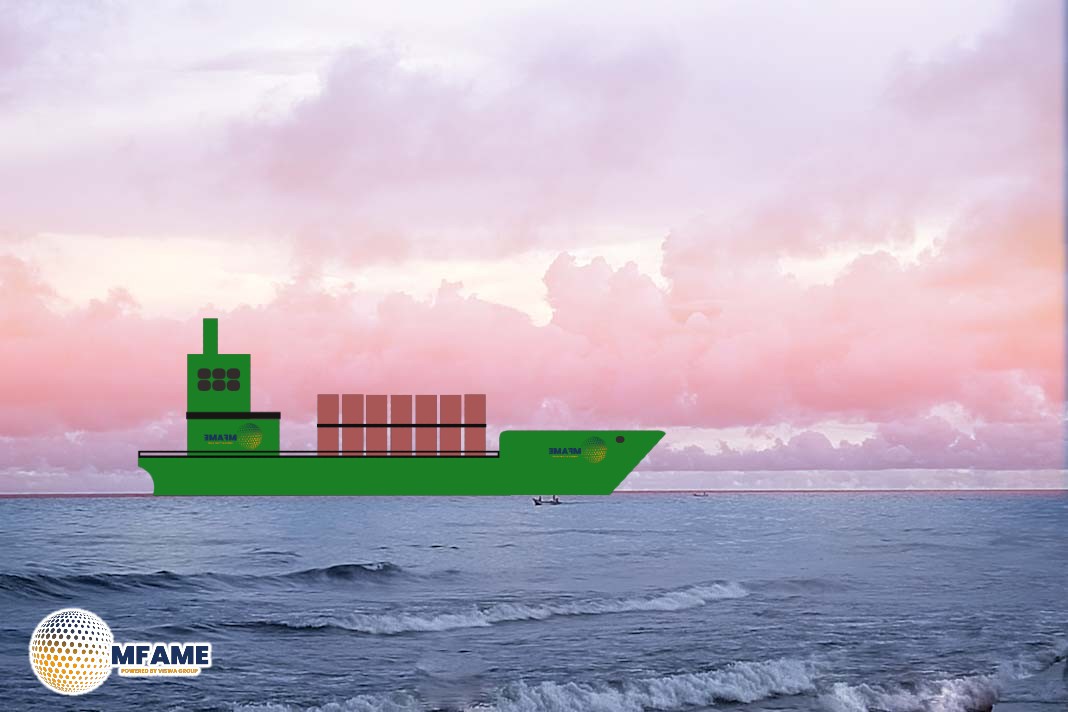
-
Oil prices have plummeted to $64 per barrel, driven by trade tensions and OPEC+ output decisions, raising uncertainty across global markets.
-
Tanker demand shows mixed trends, with VLCCs under pressure in the Middle East while Suezmaxes and Aframaxes gain ground in the Mediterranean.
-
Contango concerns resurface, potentially leading to increased oil storage demand, though land storage will fill before floating storage becomes viable.
-
Refining and clean product markets are stable but fragile, with weakening margins and shifting demand patterns influencing rate volatility.
Price Pressure and Tanker Market Trends: A Global Oil Outlook
With ongoing turbulence in the global financial markets, oil prices have once again come under significant pressure, marking a downturn reminiscent of the pandemic era. Last week saw a dramatic 18% drop in prices, reaching a four-year low before rebounding to $64 per barrel. This partial recovery came on the heels of former President Trump’s decision to pause reciprocal tariffs (excluding China) for 90 days. While U.S. trade policy was a primary catalyst behind the decline, what took many by surprise was the timing of OPEC+’s decision to accelerate production, even as demand forecasts turned increasingly bearish.
As oil prices remain volatile, the implications are multifaceted. The key factor now hinges on how long prices stay low. Although Trump’s tariff pause has temporarily stabilized the market, tensions remain high due to the ongoing U.S.–China trade conflict and the persistence of global tariffs. This uncertainty has placed U.S. shale production in a vulnerable position. According to the Federal Reserve Bank of Dallas, producers in the Permian and Eagle Ford regions need prices above $61–$62 per barrel to justify new drilling. With older wells declining, new drilling might slow, evidenced by the largest weekly drop in the oil rig count since June 2023.
The OPEC+ alliance may also need to reconsider its strategy. Despite their ability to better endure lower prices compared to U.S. shale producers, many OPEC members still depend on high oil prices to support national budgets. Prolonged low prices could pressure the group to curtail supply. However, lower prices could stimulate short-term demand, especially from major importers like China, which might take the opportunity to boost both commercial and strategic petroleum reserves. Similarly, the U.S. may look to replenish its SPR, fulfilling Trump’s promise to fill it “right to the top.” Yet, this could reduce demand for tankers if domestic grades are used.
Another emerging factor is the possibility of contango, where future oil prices exceed current prices. While not yet mirroring the 2020 levels, oversupply and sluggish demand make this a growing possibility. Still, with global onshore inventories currently below their five-year average, land-based storage will likely fill up before floating storage becomes a viable option.
Interestingly, declining prices have reduced the barriers to trading with Russia. ESPO crude recently fell below the G7 price cap, potentially reopening this trade route to Western tankers and sidelining some dark fleet vessels. Freight rates for dark fleet routes like Kozmino–North China have already shown signs of softening.
Refining margins have remained stable but could also come under pressure due to weakening demand. This could lead to refinery run cuts and potentially hasten the permanent closure of aging facilities.
While the physical oil market has yet to see dramatic disruptions, the longer tariffs loom and economic uncertainty persists, the more bearish the demand outlook becomes. However, tanker markets might experience sharp fluctuations as supply-demand imbalances emerge. In many cases, low oil prices can lead to their cure, forcing production adjustments that later stabilize the market.
Crude Tanker Markets Snapshot
Middle East (AG Region)
The VLCC market is under pressure, weighed down by weak activity and an oversupply of tonnage. Rates for AG/China and AG/USG routes currently stand at WS53 and WS29.5, respectively. For Suezmaxes, Basrah/West rates are firmer at WS55, while AG/East runs show rates climbing to WS110 amid tight vessel availability. Aframax rates are softening in the AG but show strength in the Mediterranean.
West Africa
The VLCC market shows a slight uptick in activity, but rates remain fragile at WS59 for WAF/East. The Suezmax segment is stable but may strengthen if VLCC tonnage tightens. For TD20, owners are pushing for WS105.
Mediterranean
Suezmax rates have dipped slightly, with TD6 at WS125. Libya/Ningbo sits near $5.7M, though some charterers are negotiating lower. Aframax rates have seen considerable volatility, but have now hit a point where Suezmaxes start competing for Aframax cargoes.
Americas
USG VLCC rates have slipped, with USG/China at $ 8.25 M. Brazil/China is down to WS57. Activity remains subdued, and the influx of ballasters is adding further pressure.
North Sea
Aframax rates in the region hover in the mid WS130s. Owners are considering shifting toward the Mediterranean, where more favorable conditions persist.
Clean Products Market
East of Suez
Quiet trading on LRs has led to rate corrections. TC1 is now at WS130 and TC5 at WS140. Westbound LR1s are at $ 2.9 M.
UK Continent
Mild demand for MRs has driven TC2 rates down from WS160 to WS125. A strong Handy market in the North is offering better prospects with TC23 paying WS155.
Mediterranean
The MR sector has held firm with 37 x WS155–165 to TA. The Handy segment is providing most of the support, bolstered by XMed demand. Owners ballasting from the Continent may head toward Gibraltar to catch more lucrative cargoes.
Final Word
In a market buffeted by economic headwinds, geopolitical uncertainty, and shifting production strategies, the oil and tanker sectors remain highly dynamic. While downside risks remain, traders and shippers can still find opportunity amid the volatility—especially as storage, freight, and strategic trade routes continue to evolve.















